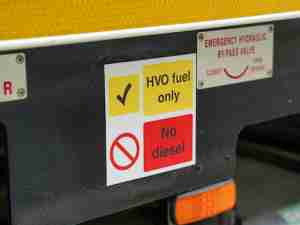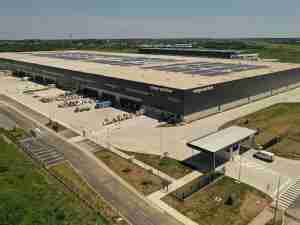For the transportation and logistics industries, sustainability is becoming an increasingly serious topic. Vehicle fleets are one of the most significant sources of carbon gases for many people. Moreover, in light of the government's net zero aim, the rush to become more environmentally friendly will only grow.
With state and federal norms and regulations constantly growing, attaining fleet management sustainability and lowering carbon emissions is now required. Fleet operators in America are likely under pressure to modernize their fleets and install GPS fleet tracking systems on every vehicle. After all, these tools are the best at facilitating green fleet management.
Overhauling the fleet is not required to reduce the carbon footprint and avoid regulatory penalties. As previously said, investing in a connected automobile solution is a simple and less expensive option to replace the present vehicle fleet. Telematics technology enables improved operating methods, which can help with long-term fleet management.
Read on to know more about the practices that can sustain and promote green fleet management.
What Is a Green Fleet Management Strategy?
A sustainable fleet management plan tries to decrease environmental impacts by using more environmentally friendly cars and fuels, operating with the least amount of fuel feasible, and lowering the quantity of road traffic created by your fleet.
There is no getting around the reality that each fleet is unique. Several approaches will be used by organizations to adopt a sustainable fleet management plan that is appropriate for their needs. But, the heterogeneity among fleets does not imply that there is no common path for organizations to follow.
A Fleet Company’s Choice Helps the Environment
According to the Global Energy Review 2021, worldwide CO2 emissions will rise as demand for oil, coal, and gas recovers in the post-COVID future. Carbon dioxide has hit its highest-ever yearly average atmospheric concentration.
Carbon dioxide emissions are over 50% more than they were before the industrial revolution began. These statistics emphasize the need of addressing climate change effectively. Humanity must act collectively to cut carbon emissions from on-road cars, particularly fleet vehicles.
Today's business sector is acutely conscious of its social and environmental responsibilities. It is largely due to the rising demand for global firms to provide environmental data as part of their corporate reporting process in annual reports, in addition to financial data.
Suppliers, consumers, and shareholders are pushing for even more transparency and responsibility regarding the environmental effect of everyday operations. Businesses are investing in and creating sustainable business practices to enhance stakeholder and consumer trust.
These practices will result in recruiting and keeping personnel, increasing brand recognition, developing credibility, fostering advancement and innovation in many forms of technology, and strengthening community links and collaborations.
Everyone is aware of the dangers of carbon dioxide emissions. To avert the worst effects, the world desperately needs solutions to cut emissions.
Tips to Sustain and Promote Green Fleet Management Effectively
Driver habits need to be assessed
With such great pressure for drivers to fulfill certain targets, such as tight delivery dates, it is easier for them to adopt undesirable driving behaviors under such stressful moments, resulting in a bigger, more destructive carbon footprint.
Use data management and telematics to monitor average speed, braking times, fuel consumption, and position. Fleet managers may then use the information to their advantage and arrange training to teach drivers how to drive more ecologically friendly.
Cleaner vehicles should be used
Choosing vehicles with lower CO2 emissions is one of the best methods to boost a fleet's green credentials. Fleet managers may investigate potential cars and select the ones that emit the fewest pollutants.
It's one thing for a corporation to choose low-emission vehicles; it's quite another to encourage employees to utilize them. How can a corporation persuade employees to prefer taking vehicles that emit fewer emissions if it has a big vehicle pool?
Education is one possibility. They might use traditional communication channels such as posters in staff lounges, corporate newsletters, and email memos. Yet, the size of the organization will determine its success.
Cargo needs to be reduced
Traveling with a modest cargo load may enhance fleet fuel efficiency, safeguard engine health, and decrease general wear and tear, all of which can reduce a vehicle's lifespan. Heavier journeys may necessitate more regular vehicle maintenance, but transporting lighter loads is safer and more efficient, allowing drivers to stop quickly in the case of a collision and reducing the chance of rolling over. As a result, it may be a superior option for both the environment and the driver.
Reduce high fuel consumption
High-level fuel usage has a significant environmental impact. Knowing how much fuel a fleet consumes daily, weekly, and monthly lets a corporation save expenditures and consumption to help lessen its carbon impact.
Fuel cards are an excellent tool to track the cost of fuel usage, and a corporation may use the data to determine how much fuel drivers purchase throughout their excursions. This enables fleet managers to implement a fuel management system, and fuel cards can also control the type and amount of gasoline purchased.
Use electric vehicles
Another common option for green fleet management is to replace a section of the fleet with electric cars (EVs). EVs are gaining popularity; sales have increased dramatically in recent years as a result of more accessible alternatives and lower entry fees.
Yet, one of the most significant impediments to the adoption of EVs in fleets has been distance anxiety. The employees are frequently anxious that they may run out of battery when traveling long distances.
Telematics data revealed that the majority of worker travels were short-distance. EVs could easily service them. This shift in perspective was only possible because of the availability of a telematics solution and an examination of the data it generated.
Route optimization
Using route optimization software will enhance fleet operations while lowering carbon footprint. This program uses dedicated algorithms that operate in tandem with GPS systems to compute the best and fastest routes depending on traffic, diversions, weather conditions, and road closures.
Conclusion
Whichever solution or plan a fleet firm seeks to use, a green fleet management strategy is critical in today's climate. As can be shown, businesses may lower their fleet emissions through a variety of methods.









